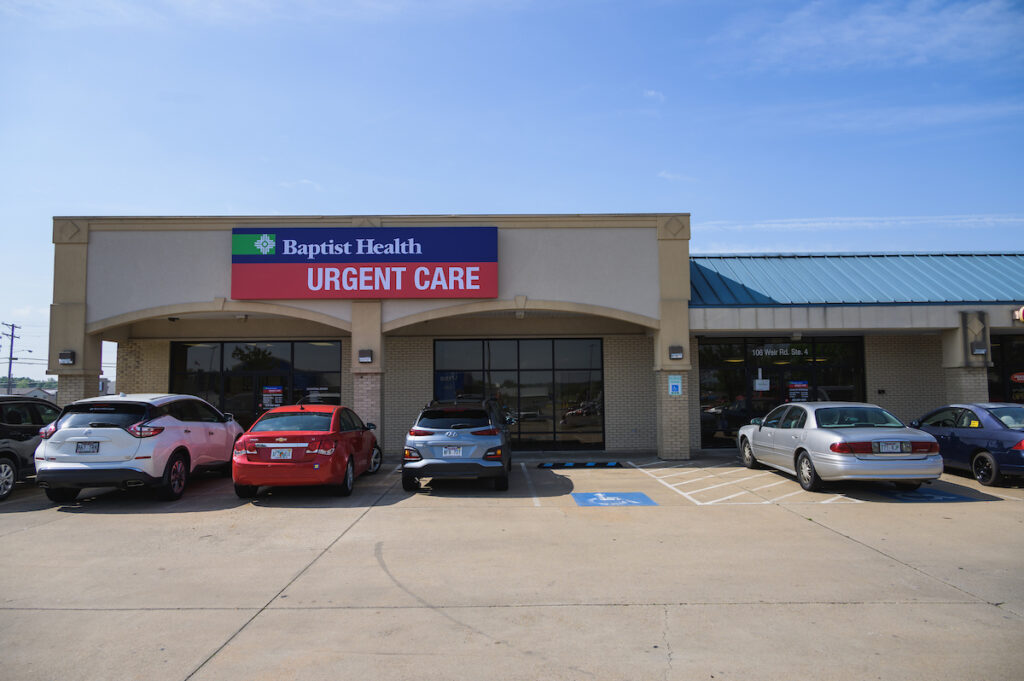How to Discover Trustworthy Urgent Care Clinics in Your Location
How to Discover Trustworthy Urgent Care Clinics in Your Location
Blog Article
Comprehending the Function of Urgent Care in Offering Timely Treatment for Non-Life-Threatening Conditions
Urgent treatment facilities have actually become a vital component of the healthcare landscape, dealing with the instant demands of clients with non-life-threatening conditions. By using prompt and easily accessible clinical solutions, these centers properly bridge the gap between health care and emergency situation divisions. However, the implications of their function expand past simple ease, prompting a better exam of when and how these centers are utilized. Recognizing the nuances of immediate treatment can considerably impact patient end results and the total effectiveness of healthcare delivery. What variables add to their expanding value in modern medicine?
What Is Urgent Care?
Immediate treatment refers to a classification of clinical solutions developed to attend to non-life-threatening problems that require instant interest. These centers serve as an intermediary between main treatment physicians and emergency clinic, offering a practical alternative for patients who need punctual treatment without the extensive waiting times commonly connected with emergency divisions.
Immediate treatment facilities are generally staffed by doctor, including physicians, nurse experts, and medical professional aides, who are trained to identify and deal with a broad variety of problems. Common services supplied by these facilities include treatment for small injuries, health problems, and infections, as well as diagnostic tests such as X-rays and research laboratory work.
The accessibility of urgent care is a vital element in its charm, as several centers run past routine office hours, including nights and weekends. When their main care carrier might not be easily accessible, this prolonged accessibility allows people to get prompt care. Additionally, urgent treatment centers often approve walk-in clients, removing the need for consultations. Generally, urgent care plays an essential function in the healthcare system, making certain clients can access important medical services promptly and efficiently.

Lots of people may find themselves unpredictable regarding when to seek care at an urgent care facility rather of a health care physician or an emergency situation room. Urgent treatment is created to deal with non-life-threatening conditions that need prompt focus but are not extreme enough to call for an emergency clinic visit.
Normally, one should think about immediate take care of problems such as small fractures, strains, cuts requiring stitches, or infections like urinary system infections. Additionally, cool or influenza symptoms, breakouts, and allergic reactions can additionally be appropriately handled in this setup.
It is necessary to note that urgent treatment is not ideal for dangerous emergency situations, such as upper body discomfort, difficulty breathing, or serious blood loss, which demand immediate emergency space treatment.
People that do not have accessibility to a primary care doctor or can not protect a prompt consultation may likewise take advantage of immediate treatment solutions. Ultimately, comprehending when to use immediate treatment can lead to much more effective medical care shipment, permitting patients to receive the suitable degree of treatment based upon their specific wellness needs.
Advantages of Urgent Treatment Centers
Choosing immediate care facilities for non-life-threatening conditions supplies a number of advantages that boost person experience and availability. One primary advantage is the reduced wait times compared to traditional emergency areas. Immediate care facilities usually operate a first-come, first-served basis, permitting people to receive timely medical focus without the lengthy delays commonly associated with health center setups.
In addition, urgent care centers provide extensive hours, consisting of evenings and weekends, fitting clients with varying timetables. This versatility ensures that people can seek care when it is most convenient for them, better promoting timely treatment.

In addition, these centers frequently provide a detailed variety of services, including small procedures and diagnostic tests, all under one roof covering. This combination of services not only enhances the client experience however also fosters an extra natural approach to managing non-life-threatening wellness problems, ultimately benefiting total individual outcomes.
Common Problems Treated
At immediate care facilities, a variety of non-life-threatening problems can be effectively dealt with, offering people with easily accessible and timely clinical support. These centers are especially adept at resolving problems that call for prompt interest but do not present an immediate danger to life or arm or leg.
Usual problems dealt with at immediate treatment facilities consist of small injuries such as strains, stress, and cracks. Urgent care facilities are outfitted to carry out needed analysis tests, such as X-rays and research laboratory tests, enabling them to supply thorough care.
In addition, urgent care service providers can administer inoculations, assisting to avoid the spread of transmittable diseases - Urgent Care. They also use solutions for minor procedures, such as suturing wounds or draining abscesses. By offering these varied services, urgent treatment facilities play a vital duty in connecting the space between health care and emergency situation solutions, ensuring people receive prompt treatment for a variety of conditions without the requirement for lengthy wait times commonly related to emergency situation spaces
How Urgent Treatment Sustains Health Care System
Immediate important source care facilities play a vital role in sustaining the overall medical care system by alleviating the worry on emergency divisions and providing timely accessibility to medical care for non-life-threatening problems. By handling situations such as small injuries, infections, and diseases, immediate treatment facilities enable emergency situation departments to concentrate on even more important patients needing prompt attention.
Furthermore, immediate care facilities boost health care ease of access, offering prolonged hours and an extra convenient option to traditional key care setups. This access is specifically useful for people who might not have a normal doctor or that require prompt therapy beyond common workplace hours. Because of this, immediate care centers efficiently decrease wait times and boost client satisfaction.
Furthermore, immediate treatment facilities add to set you back financial savings for both patients and the healthcare system by supplying lower-cost solutions contrasted to emergency situation divisions. This financial efficiency is important in an age of increasing health care expenses, permitting individuals to obtain required treatment without incurring exorbitant expenditures.
Final Thought
Finally, urgent care facilities play a vital role in the healthcare system by delivering timely therapy for non-life-threatening problems. By bridging the space between medical care and emergency clinic, these centers make certain that patients receive prompt medical attention without the prolonged wait times typically related to emergency divisions. The access and performance of immediate care centers contribute considerably to reducing the next overall worry on medical care resources, enhancing person end results, and advertising a more effective health care delivery system.
Immediate care centers have actually emerged as an essential element of the medical care landscape, attending to the immediate demands of clients with non-life-threatening problems. Immediate care visits normally sustain lower out-of-pocket expenditures compared to emergency situation department brows through, making care extra affordable for individuals without compromising high quality. Immediate care facilities are geared up to execute required analysis tests, such as X-rays and research laboratory tests, enabling them to give detailed care.
By supplying these varied services, urgent care facilities play an important role in connecting the gap between key treatment and emergency solutions, making certain individuals receive prompt treatment for a large variety of conditions without the requirement for long wait times generally linked with emergency areas.
Additionally, urgent treatment facilities enhance medical care access, using extended hours and an extra practical option to typical main care setups.
Report this page